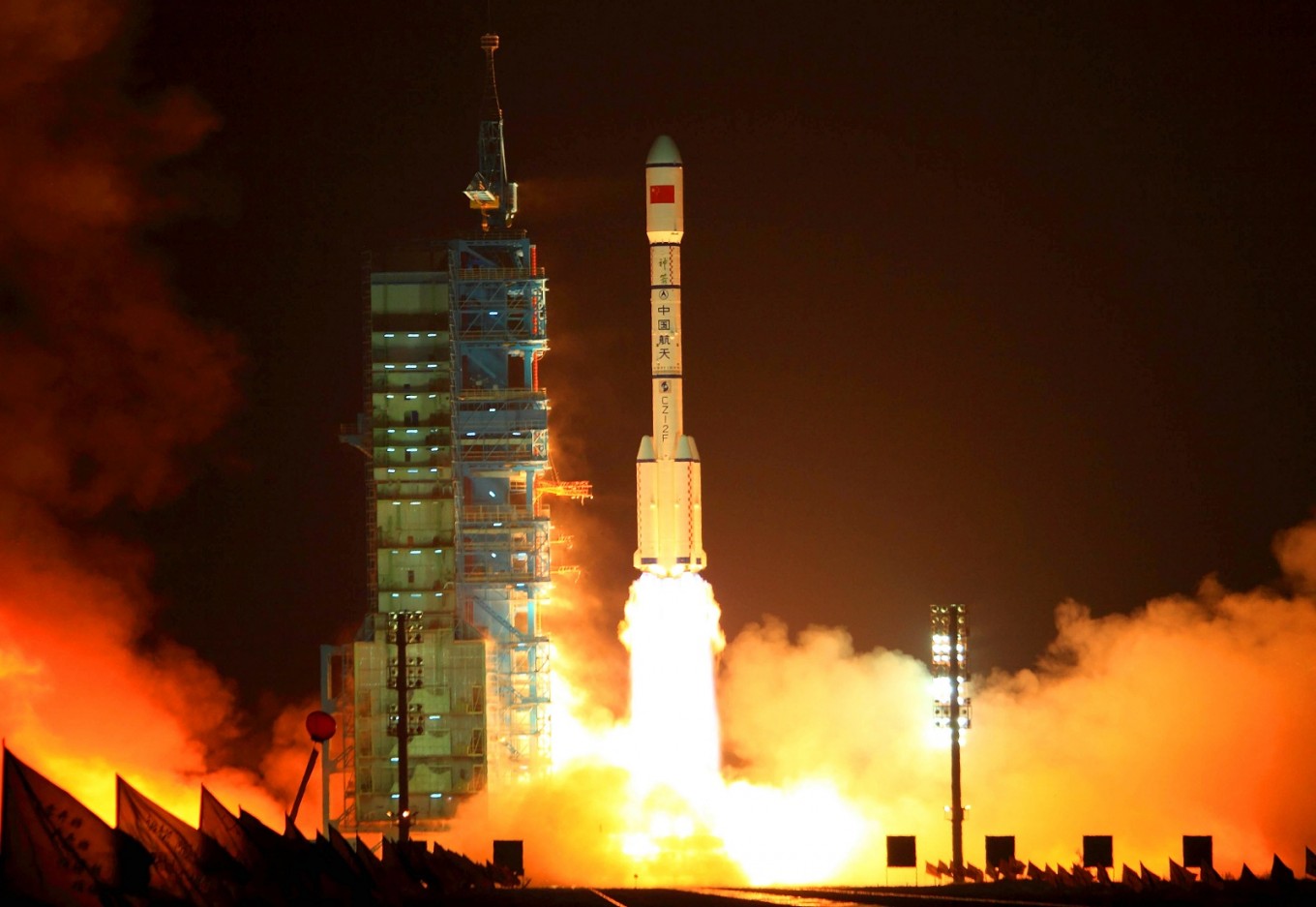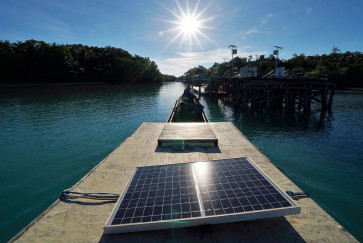Popular Reads
Top Results
Can't find what you're looking for?
View all search resultsPopular Reads
Top Results
Can't find what you're looking for?
View all search resultsChina launches probe to explore dark side of Moon: Xinhua
Change text size
Gift Premium Articles
to Anyone
 This file picture taken on Sept. 29, 2011 shows China's Long March 2F rocket carrying the Tiangong-1 module, or 'Heavenly Palace', blasting off from the Jiuquan launch centre in Gansu province. A defunct Chinese space lab plunged through Earth's atmosphere on April 2, 2018, breaking apart as it headed towards a watery grave in the South Pacific, Beijing said. (AFP/File)
This file picture taken on Sept. 29, 2011 shows China's Long March 2F rocket carrying the Tiangong-1 module, or 'Heavenly Palace', blasting off from the Jiuquan launch centre in Gansu province. A defunct Chinese space lab plunged through Earth's atmosphere on April 2, 2018, breaking apart as it headed towards a watery grave in the South Pacific, Beijing said. (AFP/File)
C
hina on Saturday launched a first probe ever to explore the dark side of the Moon, marking another milestone in its ambitious space program, the official Xinhua News Agency reported.
The probe, the Chang'e-4, is expected to make the first-ever soft landing on the far side of the Moon, according to Xinhua. Previous spacecraft have seen the far side of the Moon, but none has landed on it.
The Moon is tidally locked to Earth, rotating at the same rate that it orbits our planet, so the far side is never visible from Earth.
Advancing China's space program has been a priority of its leaders, with President Xi Jinping calling for China to establish itself as a space power.
At 2:23 am (1823 GMT Friday), a Long March-3B rocket, carrying the probe including a lander and a rover, blasted off from the satellite launch center Xichang in southwest China, Xinhua said.
The tasks of the Chang'e-4 probe include low-frequency radio astronomical observation, surveying the terrain and landforms, detecting the mineral composition, and measuring the neutron radiation and neutral atoms to study the environment on the far side of the moon, Xinhua quoted the China National Space Administration as saying.
China aims to catch up with Russia and the United States to become a major space power by 2030. It is planning to launch construction of its own manned space station next year.
However, while China has insisted its ambitions are purely peaceful, the U.S. Defense Department has accused it of pursuing activities aimed at preventing other nations from using space-based assets during a crisis.










